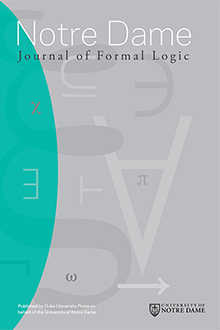Abstract
A set A is symmetric enumeration (se-) reducible to a set B (A ≤\sb se B) if A is enumeration reducible to B and \barA is enumeration reducible to \barB. This reducibility gives rise to a degree structure (D\sb se) whose least element is the class of computable sets. We give a classification of ≤\sb se in terms of other standard reducibilities and we show that the natural embedding of the Turing degrees (D\sb T) into the enumeration degrees (D\sb e) translates to an embedding (ι\sb se) into D\sb se that preserves least element, suprema, and infima. We define a weak and a strong jump and we observe that ι\sb se preserves the jump operator relative to the latter definition. We prove various (global) results concerning branching, exact pairs, minimal covers, and diamond embeddings in D\sb se. We show that certain classes of se-degrees are first-order definable, in particular, the classes of semirecursive, Σ\sb n ⋃ Π\sb n, Δ\sb n (for any n \in ω), and embedded Turing degrees. This last result allows us to conclude that the theory of D\sb se has the same 1-degree as the theory of Second-Order Arithmetic.
Citation
Charles M. Harris. "On the Symmetric Enumeration Degrees." Notre Dame J. Formal Logic 48 (2) 175 - 204, 2007. https://doi.org/10.1305/ndjfl/1179323263
Information





